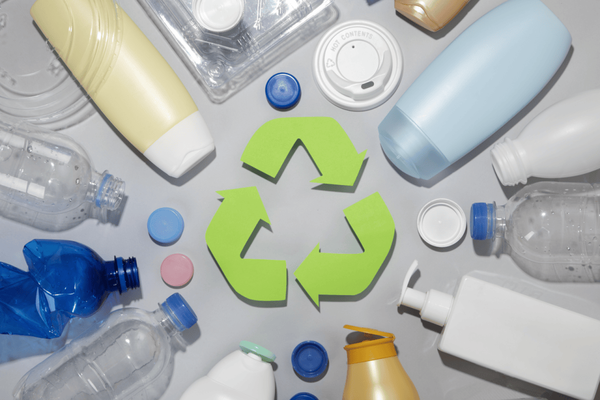3D Printing Empowers Circular Economy: The Innovative Rebirth of Waste Plastics

During the critical period of global plastic pollution control, 3D printing technology is becoming an important engine for the resource utilization of waste plastics. Through technological innovation, what was once plastic waste is now returning to production and life in a high-value-added form, injecting new momentum into sustainable development.
01
Shanghai's practices provide a vivid example for the "rebirth" of waste plastics. Local entrepreneurial teams use 3D printing technology to transform discarded plastic bottles into personalized figurines, and old sports shoes, after being disassembled and processed, are turned into public sports facilities. This model of reducing at the source not only shortens the resource recycling cycle but also enhances the public's value recognition of plastic recycling through creative design.
Similarly, Covestro collaborated with Polymaker to develop high-performance 3D printing filaments using Nongfu Spring's 19-liter polycarbonate water barrels as raw materials, which have been successfully applied in industrial fields such as electronics and automotive. This material not only significantly reduces the carbon footprint but also passes professional certification, providing a replicable green supply chain solution for the industry.
02
Technical breakthroughs have further accelerated the conversion efficiency of waste plastics. The PETFusion 2.0 device launched by a startup can directly recycle discarded plastic bottles and turn them into customized 3D printing filaments.
By integrating cutting, drying, and coloring functions, the device achieves efficient conversion from plastic bottles to filaments, with a single bottle production capacity of 7-15 meters, and supports personalized color design, providing a flexible tool for small and medium-scale recycling. This "waste-to-treasure" technology loop not only reduces plastic pollution but also lowers printing costs, promoting the development of a circular economy towards a more refined direction.

03
From environmental science popularization to industrial applications, from small and medium-sized enterprises to multinational corporations, the deep integration of 3D printing and waste plastics is reshaping the boundaries of resource utilization.
These innovative practices not only provide a technological pathway for the management of plastic waste, but also demonstrate to the public the infinite possibilities of a circular economy. As technology continues to evolve, more waste plastics may be rejuvenated through 3D printing in the future, contributing technological strength to the construction of a sustainable green future.
【Copyright and Disclaimer】The above information is collected and organized by PlastMatch. The copyright belongs to the original author. This article is reprinted for the purpose of providing more information, and it does not imply that PlastMatch endorses the views expressed in the article or guarantees its accuracy. If there are any errors in the source attribution or if your legitimate rights have been infringed, please contact us, and we will promptly correct or remove the content. If other media, websites, or individuals use the aforementioned content, they must clearly indicate the original source and origin of the work and assume legal responsibility on their own.
Most Popular
-

Brazil Imposes Five-Year Anti-Dumping Duty of Up to $1,267.74 Per Ton on Titanium Dioxide From China
-

Mexico officially imposes tariffs on 1,400 chinese products, with rates up to 50%
-

MOFCOM Spokesperson Answers Questions from Reporters on China-U.S. Kuala Lumpur Trade Consultations Joint Arrangement
-

"Golden October" Weak, Polyethylene Prices Hit New Low of the Year in October
-

China-U.S. Summit in Busan Tomorrow! Syensqo Launches New PAEK Material; Ascend Debuts at Medical Summit






